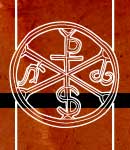
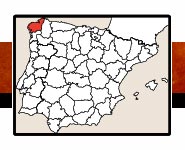

 |
 |
||
 |
|||
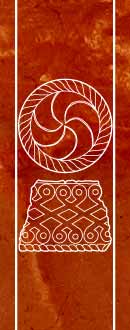 |
(40)/MS-mp-pres-FIN-40/CORU-Coruna-40.jpg) |
-55/BOOK-cort-40.jpg) |
 |
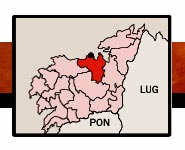 |
||
 |
|||
 |
ACCESO POR CARRETERA (A CORUÑA) UBICACIÓN DE ENCLAVES:La Coruña es el punto final de la N-VI (A-6), en la península de A Coruña se ubica la ciudad vieja y los principales monumentos (castillo de San Antón, Faro de Hércules, plaza de María Pita, colegiata de Santa María, convento de Santo Domingo etc…). Consulta el plano.TORRE HERCULES: Se ubica en el extremo norte de la península de La Coruña, hay cartelería en la ciudad. SAN ANTÓN: Se ubica en el extremo sur de la península de La Coruña, se accede por el paseo marítimo. ELVIÑA: Se ubica en un cerro situado en el Campus universitario de A Coruña, se puede acceder por la AC-11, donde está indicado. |
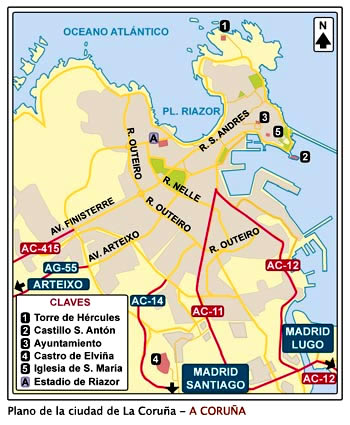 |
ACCESS BY ROAD (A CORUÑA) LOCATIONLa Coruña is the final point of the N-VI (A-6), in the peninsula of La Coruña is located the old city and the main monuments (Castle of San Antón, Faro de Hércules, María Pita square, collegiate of Santa Maria, convent of Santo Domingo etc...). Check the map. HERCULES TOWER: It's located in the northen end of Coruña's peninsula; there are road signals in the city. SAN ANTÓN: It's located in the southern end of La Coruña's peninsula; access by promenade. ELVIÑA: It is located in a hill located in the university campus of A Coruña; you can access by the AC-11, there is indicated. |
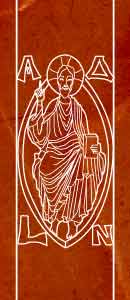 |
ACCESO DE MINUSVALIDOST. HERCULÉS: Para minusválidos solo visible el exterior, pues el acceso se hace por escaleras. SAN ANTÓN: Existen varias barreras arquitectónicas (peldaños), en la entrada, que pueden limitar la visita. ELVIÑA: Se ubica en un alto cerro, inaccesible para minusválidos. CORUÑA: Para la colegiata el acceso es factible con silla de ruedas; también a la plaza de Maria Pita; el escalón del convento de Santo Domingo es muy bajo, el acceso (portón ancho) es factible. |
ACCESS FOR THE HANDICAPPEDHERCULES TOWER: For the handicapped only outside is visible; because access is made by stairs. SAN ANTÓN: There are architectural barriers (steps), just at the gate, that can limit the visit. ELVIÑA: It's located on a high hill, inaccessible for handicapped. CORUÑA: For the collegiate access is feasible with wheelchair; also to the Plaza de María Pita; the step of the convent of Santo Domingo is very low, access (wide gate) is feasible. |
|||